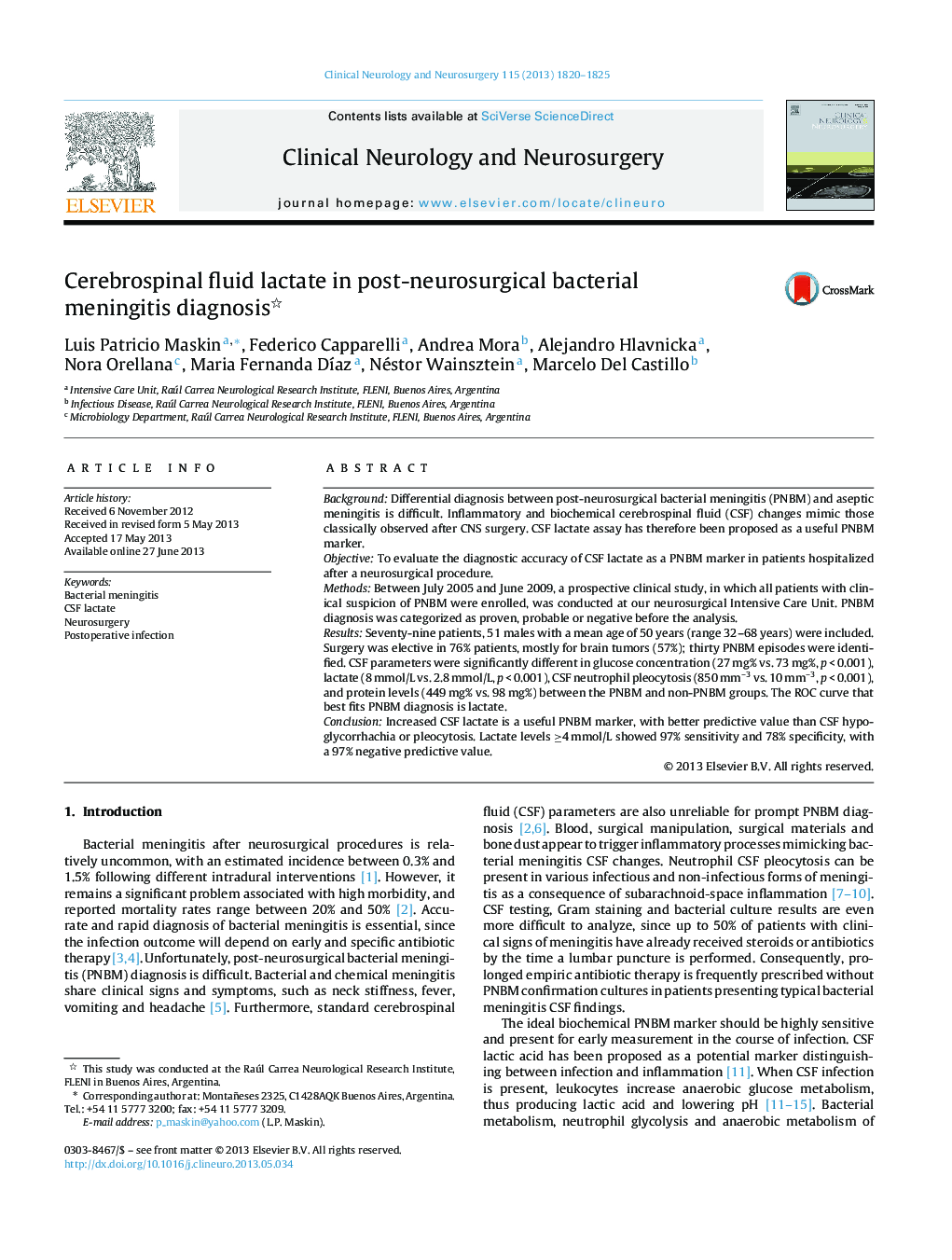| Article ID | Journal | Published Year | Pages | File Type |
|---|---|---|---|---|
| 3040507 | Clinical Neurology and Neurosurgery | 2013 | 6 Pages |
BackgroundDifferential diagnosis between post-neurosurgical bacterial meningitis (PNBM) and aseptic meningitis is difficult. Inflammatory and biochemical cerebrospinal fluid (CSF) changes mimic those classically observed after CNS surgery. CSF lactate assay has therefore been proposed as a useful PNBM marker.ObjectiveTo evaluate the diagnostic accuracy of CSF lactate as a PNBM marker in patients hospitalized after a neurosurgical procedure.MethodsBetween July 2005 and June 2009, a prospective clinical study, in which all patients with clinical suspicion of PNBM were enrolled, was conducted at our neurosurgical Intensive Care Unit. PNBM diagnosis was categorized as proven, probable or negative before the analysis.ResultsSeventy-nine patients, 51 males with a mean age of 50 years (range 32–68 years) were included. Surgery was elective in 76% patients, mostly for brain tumors (57%); thirty PNBM episodes were identified. CSF parameters were significantly different in glucose concentration (27 mg% vs. 73 mg%, p < 0.001), lactate (8 mmol/L vs. 2.8 mmol/L, p < 0.001), CSF neutrophil pleocytosis (850 mm–3 vs. 10 mm–3, p < 0.001), and protein levels (449 mg% vs. 98 mg%) between the PNBM and non-PNBM groups. The ROC curve that best fits PNBM diagnosis is lactate.ConclusionIncreased CSF lactate is a useful PNBM marker, with better predictive value than CSF hypoglycorrhachia or pleocytosis. Lactate levels ≥4 mmol/L showed 97% sensitivity and 78% specificity, with a 97% negative predictive value.
